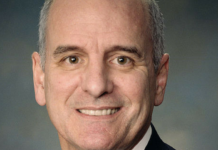ST. PAUL, Minn.- There is a great deal of debate on the health of Minnesota’s State Retirement System (MSRS) following a report showing a significant decrease in the amount of the program being funded. State officials say that the validity of this recent report, however, is questionable.
Bloomberg recently indicated that the MSRS were in serious trouble, through their evaluation of the Government Accounting Standards Board MSRS plan. From analysis of this plan, Bloomberg speculated that “Minnesota’s debt to its workers retirement system has soared by $33.4 billion, or $6,000 for every resident.”
The report expressed that recent lowballing in funding resulted in Minnesota only being able to fund 53 percent of its public pensions. As a comparison, in 2015, Minnesota was able to cover 80 percent of its pensions.
A large part of this problem has been new rules that have lead to a drop in how much public employees are paying into their pensions. Pensions are funded in part from the public employees who make up the fund. The teacher’s fund, for instance, is made up of contributions from public educators, and the amount they contribute is dictated by a set rate, called discount on liabilities. Previously, Minnesota educator’s pension was set at an eight percent discount on liabilities. In the last year, however, this rate was put at 4.7 percent, meaning that public educators were contributing less into the fund. Under these set of assumptions, this lead the amount of liabilities to increase by $16.7 billion.
However, the Executive Director of the Legislative Commission on Pensions and Retirements, Susan Lenczewski indicated that there were two important shortcomings in Bloomberg’s analysis.
“The Bloomberg article focused on the plans’ financial/accounting information, rather than the plans’ actuarial information,” Lenczewski said. “The accounting standards (i.e., GASB) used to produce financial reports produce a bleaker picture of the plans’ status than the actuarial standards. The actuarial reports are what the pension plans and the legislature rely on to determine funding, benefit reforms, and legislative action.”
Actuarial valuation, which Lenczewski is referring to, is defined as, “a type of appraisal which requires making economic and demographic assumptions in order to estimate future liabilities. The assumptions are typically based on a mix of statistical studies and experienced judgment. Since assumptions are often derived from long-term data, unusual short-term conditions or unanticipated trends can occasionally cause problems.”
A Teacher’s Retirement Association memo seems to reflect this sentiment, stating;
“GASB reporting is not intended to provide a picture of the funded status of a pension plan. Instead, funded status is determined by an actuarial funding methodology, the objective of which is to achieve an ultimate funded status of 100 percent. If the TRA reforms currently pending in the legislature are enacted, TRA will be on that positive funding trajectory.”
Lenczewski also points out that Bloomberg’s numbers were from the 2016 fiscal year, which has less returns on investments (-0.10) than fiscal year 2017 numbers, which will show a 15.1 percent investment return. Lenczewski indicated that this 15.1 percent investment return would certainly increase the percent of the public pensions funded from the 53 percent indicated in the Bloomberg report. Furthermore, the memo indicates that “year-to-year GASB numbers will fluctuate wildly and do not provide appropriate guidance for oversight of pension funding, which is best viewed through a very long-term lens.” It is necessary to point out though that GASB still plays an important role in the decision making of both the school districts and the teachers pension plan, due to state standards.
Much of the reform in the retirement system is up to the legislature. The legislature did author bills in 2016 and 2017 that were aimed at improving the funding of the public pensions as well as making benefit reforms to the system. However, both these attempts were vetoed by Gov. Mark Dayton.

















